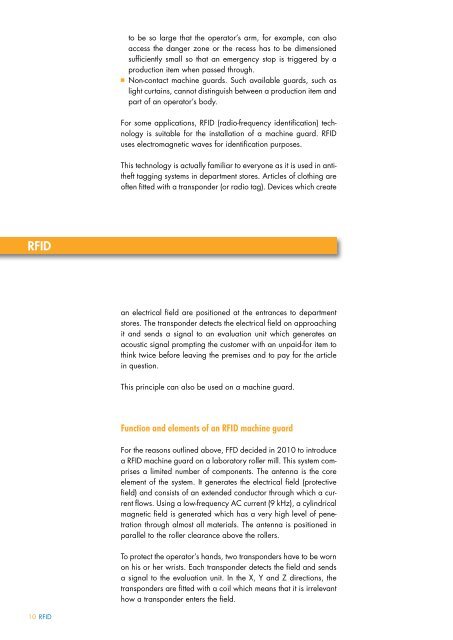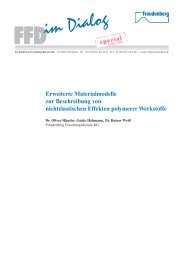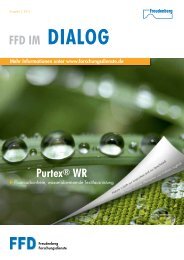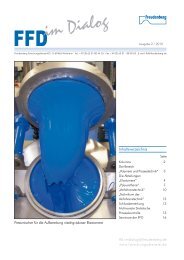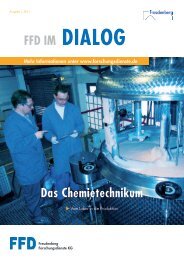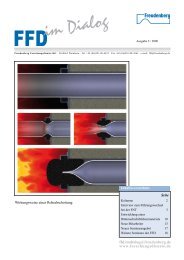FFD IM - Freudenberg Forschungsdienste SE & Co. KG
FFD IM - Freudenberg Forschungsdienste SE & Co. KG
FFD IM - Freudenberg Forschungsdienste SE & Co. KG
Create successful ePaper yourself
Turn your PDF publications into a flip-book with our unique Google optimized e-Paper software.
RFID<br />
10 RFID<br />
to be so large that the operator’s arm, for example, can also<br />
access the danger zone or the recess has to be dimensioned<br />
sufficiently small so that an emergency stop is triggered by a<br />
production item when passed through.<br />
Non-contact machine guards. Such available guards, such as<br />
light curtains, cannot distinguish between a production item and<br />
part of an operator’s body.<br />
For some applications, RFID (radio-frequency identification) technology<br />
is suitable for the installation of a machine guard. RFID<br />
uses electromagnetic waves for identification purposes.<br />
This technology is actually familiar to everyone as it is used in antitheft<br />
tagging systems in department stores. Articles of clothing are<br />
often fitted with a transponder (or radio tag). Devices which create<br />
an electrical field are positioned at the entrances to department<br />
stores. The transponder detects the electrical field on approaching<br />
it and sends a signal to an evaluation unit which generates an<br />
acoustic signal prompting the customer with an unpaid-for item to<br />
think twice before leaving the premises and to pay for the article<br />
in question.<br />
This principle can also be used on a machine guard.<br />
Function and elements of an rFID machine guard<br />
For the reasons outlined above, <strong>FFD</strong> decided in 2010 to introduce<br />
a RFID machine guard on a laboratory roller mill. This system comprises<br />
a limited number of components. The antenna is the core<br />
element of the system. It generates the electrical field (protective<br />
field) and consists of an extended conductor through which a current<br />
flows. Using a low-frequency AC current (9 kHz), a cylindrical<br />
magnetic field is generated which has a very high level of penetration<br />
through almost all materials. The antenna is positioned in<br />
parallel to the roller clearance above the rollers.<br />
To protect the operator’s hands, two transponders have to be worn<br />
on his or her wrists. Each transponder detects the field and sends<br />
a signal to the evaluation unit. In the X, Y and Z directions, the<br />
transponders are fitted with a coil which means that it is irrelevant<br />
how a transponder enters the field.


